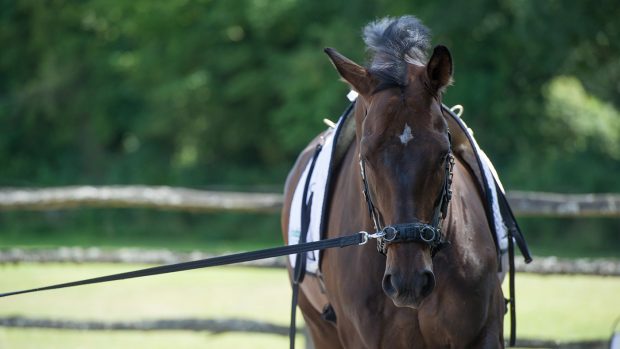If you’re competing at grassroots level and therefore unable to wear a stopwatch, how can you accurately judge your speed and avoid pesky time-faults?
According to eventer J-P Sheffield, who has produced many horses to CCI4* level, it is possible to train yourself to do it.
Here’s 6 steps to train yourself to judge your horse’s speed:
1 Mark out 520m on a gallop track or in a field.
2 Attempt to get from one point to the other in one minute.
3 Check your time and work out if you need to be slower or faster when you try again.
4 If you start from a standstill you will be slower, because it takes time to get going and find a rhythm. It’s like leaving a startbox — that is why the first minute on a course is one of the slowest.
5 The type of fence you have to negotiate will also affect how quickly you can travel. For example a technical question, such as water or a combination, requires a shorter, punchier canter and therefore wastes more time. However, straightforward fences, such as a rolltop or a log, will be quicker as there is less setting up to do in front of the fence.
6 “As a rider gets more experienced they learn where the quicker sections are so that they can make up the time,” explains J-P.
Exercise: save time through transitions
This exercise helps achieve smoother transitions across country, therefore saving time by making the horse more rideable. It will improve the quality of the canter, teach a horse to shorten its stride and ensure you ride accurate transitions that the horse responds to immediately.
– Place three ground poles 14 yards apart.
– “It’s a three-stride canter distance but the aim is to fit in four strides,” says J-P.
– The middle pole should be raised several inches off the floor, making the stride over that pole longer.
– Make sure you ride in a gentle way — don’t yank at the horse’s mouth in order to contain the stride.
– Make sure each pole is at the middle of a stride and you do it in both directions.




